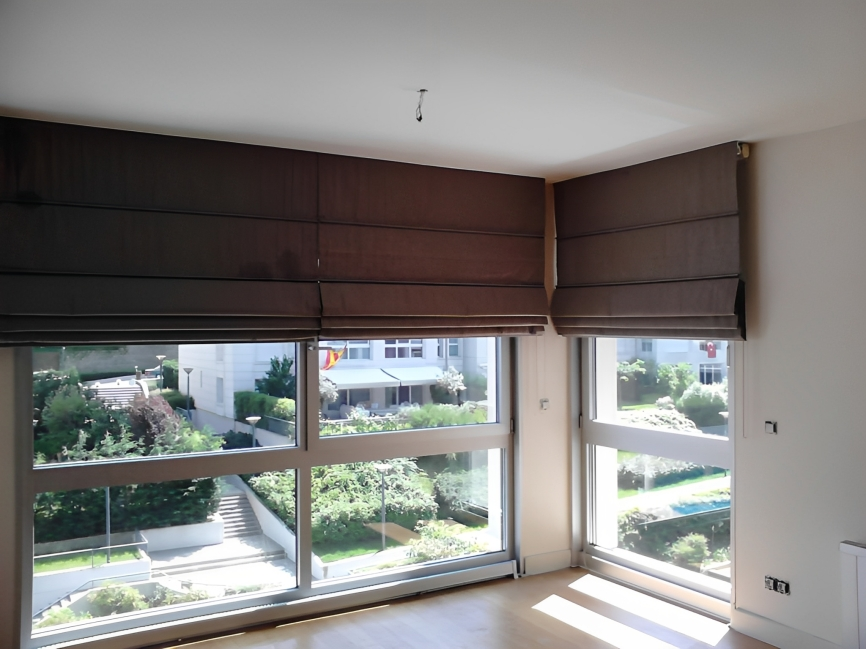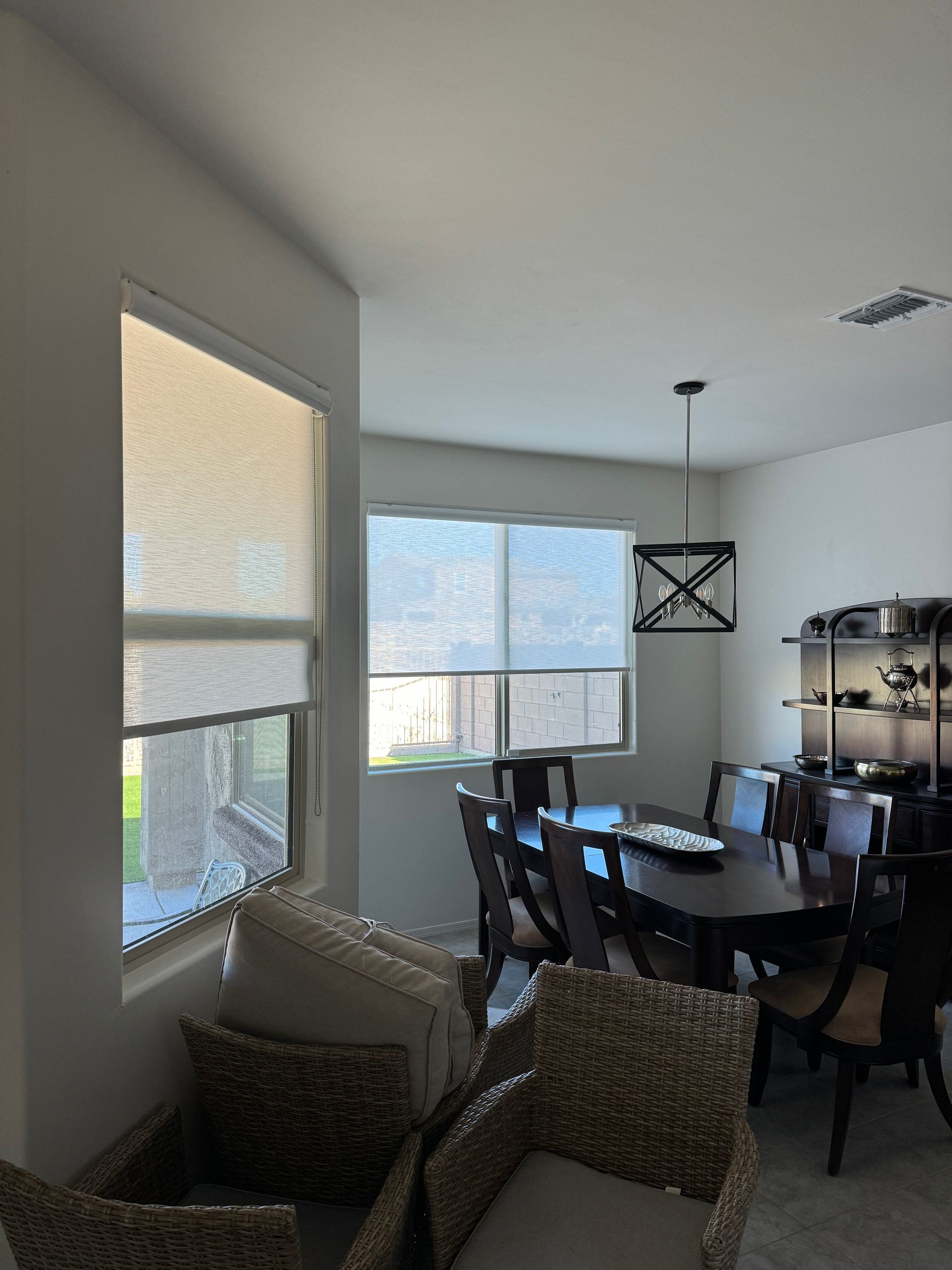Article
How long do blinds and curtains last?
December 8, 2024
How Long Do Blinds and Curtains Last? A Guide to Longevity and Replacement Timelines
Blinds and curtains are more than just practical solutions for controlling light and privacy; they are integral parts of your home decor. Over time, however, even the most well-maintained window treatments will begin to show signs of wear. If you're wondering how long blinds and curtains last and how often they should be replaced, this guide will provide answers by breaking down the lifespans of different materials and offering tips to maximize longevity.
The Average Lifespan of Blinds and Curtains
The longevity of blinds and curtains depends on several factors, including the material, frequency of use, exposure to sunlight, and the quality of maintenance. On average:
Blinds: 5–10 years
Curtains: 10–15 years
These timeframes are general estimates. High-quality materials and proper care can extend the lifespan, while exposure to harsh conditions or neglect can shorten it.
Factors Affecting Longevity
Material Quality: Higher-quality materials last longer than cheaper options. For instance, wood blinds outlast vinyl ones, and heavy-duty fabrics resist wear better than delicate sheers.
Environmental Conditions: Exposure to direct sunlight, humidity, or fluctuating temperatures can degrade materials over time.
Frequency of Use: Window treatments used daily will naturally wear out faster than those in less-used rooms.
Maintenance: Regular cleaning and proper care can significantly extend the life of your blinds and curtains.
How Often Should You Replace Blinds and Curtains?
There is no set rule for replacement, but consider replacing your window treatments if you notice:
Fading or discoloration
Broken or malfunctioning mechanisms (for blinds)
Tears, fraying, or other fabric damage (for curtains)
A need to update the style or better match new decor
Longevity by Material
1. Wood Blinds
Lifespan: 7–10 years
Durability: Wood blinds are sturdy and long-lasting, especially when made from high-quality hardwood. They are less prone to warping but can suffer damage in high-humidity areas like kitchens or bathrooms.
Care Tips: Regular dusting and occasional cleaning with a wood-safe cleaner can prevent cracks and maintain their finish.
2. Faux Wood Blinds
Lifespan: 5–8 years
Durability: Faux wood blinds are moisture-resistant and more affordable than real wood, making them ideal for humid environments. However, the synthetic material may fade over time with prolonged sun exposure.
Care Tips: Clean with a damp cloth to remove dust and grime.
3. Aluminum Blinds
Lifespan: 5–7 years
Durability: Aluminum blinds are lightweight, durable, and resistant to rust, making them a popular choice for many homes. However, they can become dented or bent if mishandled.
Care Tips: Clean with a soft cloth and mild detergent to keep them looking new.
4. Vinyl Blinds
Lifespan: 5–7 years
Durability: Vinyl blinds are budget-friendly and moisture-resistant, but they are prone to cracking or discoloration over time.
Care Tips: Avoid harsh cleaning agents, as they can weaken the material.
5. Fabric Blinds and Shades
Lifespan: 5–10 years
Durability: Fabric shades like Roman shades or roller shades are stylish and versatile but may fade or fray with sun exposure or excessive use.
Care Tips: Vacuum regularly to remove dust and consider using UV-blocking window film to protect them from sun damage.
6. Sheer Curtains
Lifespan: 3–7 years
Durability: Sheer curtains are lightweight and delicate, which makes them prone to tearing or losing their crisp appearance over time.
Care Tips: Handwash or use a gentle machine cycle with cold water to preserve the fabric.
7. Heavy-Duty Curtains
Lifespan: 10–15 years
Durability: Thick, lined curtains made of durable materials like velvet or heavy cotton can last for over a decade, provided they are well cared for.
Care Tips: Regular vacuuming and professional cleaning every few years will keep them in top condition.
8. Blackout Curtains
Lifespan: 10–12 years
Durability: Blackout curtains are typically made of heavier materials with light-blocking liners. The liner may wear out faster than the fabric, especially in sunny environments.
Care Tips: Spot clean as needed and avoid machine washing, which can damage the lining.
9. Outdoor Blinds and Shades
Lifespan: 3–5 years
Durability: Outdoor blinds and shades are exposed to harsh elements, which shortens their lifespan. Look for UV-resistant and weatherproof materials for longer durability.
Care Tips: Regularly clean and retract them during extreme weather conditions.
Tips to Extend the Life of Your Window Treatments
Clean Regularly
Dusting blinds weekly and vacuuming curtains can prevent the buildup of dirt and debris, which can cause wear over time.
Protect from Sun Damage
Use UV-blocking window film or a secondary layer of curtains to shield window treatments from direct sunlight.
Repair Instead of Replace
For minor issues like a broken slat or torn hem, consider repairing instead of replacing. Many blinds and curtains have parts that can be replaced individually.
Rotate or Rearrange
Move window treatments from high-traffic to low-traffic areas periodically to even out wear.
Invest in Quality
Higher-quality window treatments may cost more upfront but often last longer and perform better in the long run.
When Replacement Becomes Necessary
Even with proper care, there comes a time when blinds and curtains need to be replaced. Here are some signs to watch for:
Malfunctioning Blinds: Difficulty raising, lowering, or tilting slats indicates worn-out mechanisms.
Severe Fading or Discoloration: Sun exposure can bleach fabric and plastic, making your window treatments look dated.
Fabric Deterioration: Frayed edges or sagging fabric are signs of irreparable wear.
Style Updates: If your decor has changed, outdated window treatments can detract from the overall look of your space.
Why Replace Blinds and Curtains Regularly?
Replacing your window treatments every few years, or as needed, isn’t just about aesthetics—it can improve functionality, energy efficiency, and safety. For example:
Energy Efficiency: Newer models with thermal or blackout features can significantly reduce heating and cooling costs.
Safety: Modern blinds are often cordless, reducing the risk of accidents for children and pets.
Improved Aesthetics: Fresh window treatments can transform the look of a room, adding style and sophistication.
Conclusion
Blinds and curtains are essential investments for your home, and their longevity depends on factors like material, use, and care. While most blinds last between 5–10 years and curtains between 10–15 years, regular cleaning and maintenance can maximize their lifespan. When the time comes to replace them, consider high-quality, durable materials that suit your lifestyle and aesthetic preferences.
If you're in the market for new blinds or curtains, StyloHome Blinds, Shades, and More offers a wide range of options to suit every home and budget. Whether you need energy-efficient shades or stylish curtains, we’re here to help you find the perfect fit for your space. Contact us today to explore our collection!







